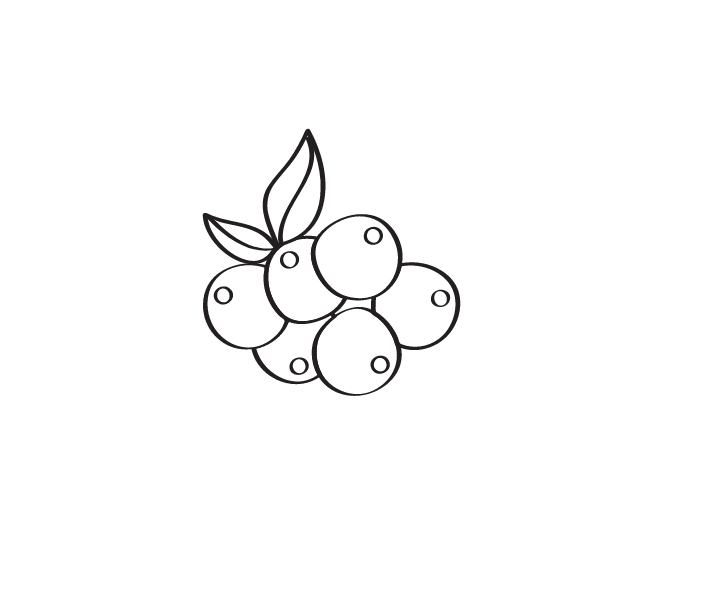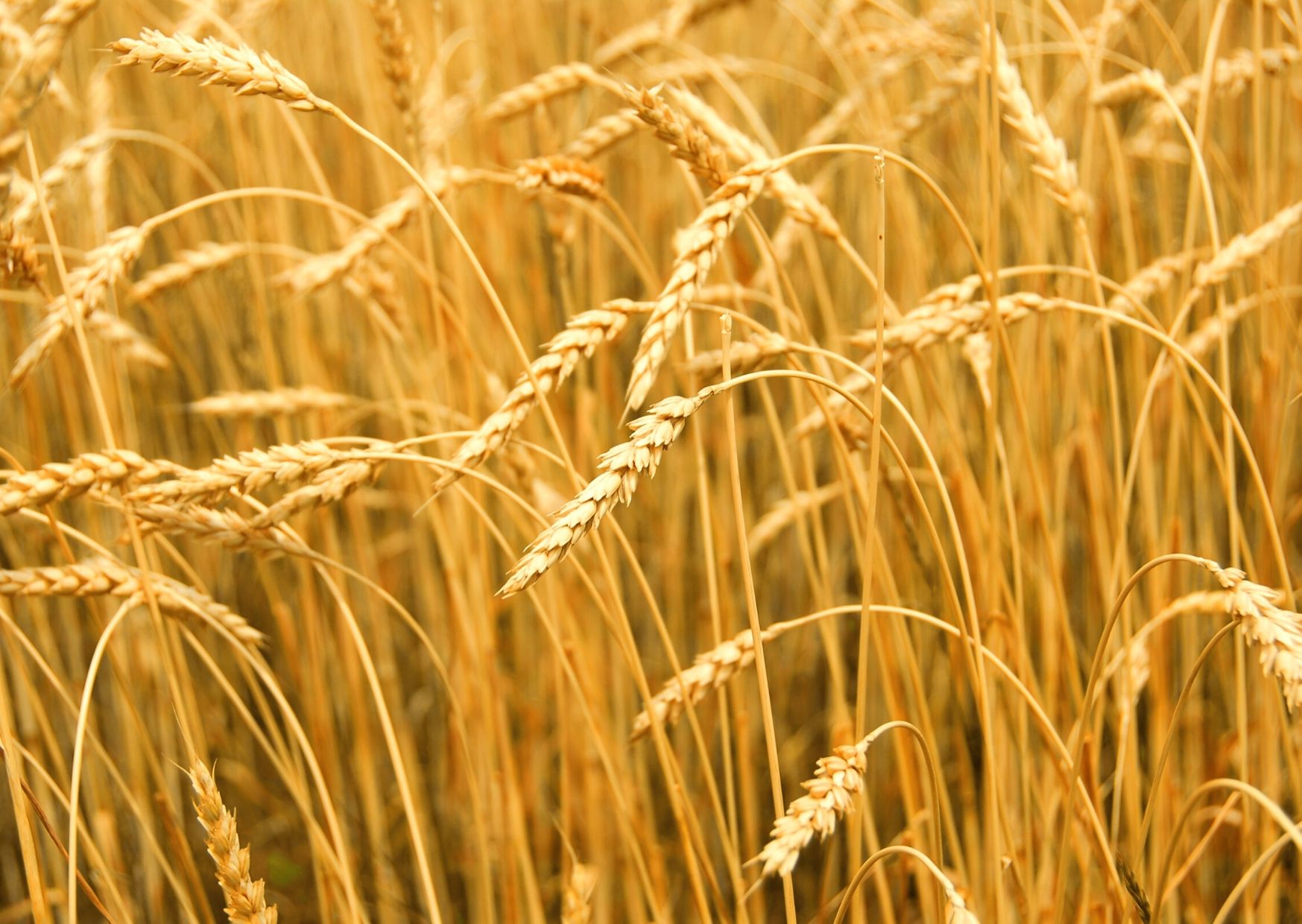
All you need
to know about
whisky
in a nutshell
Whiskey/whisky is a spirit produced from fermented grains and often aged in wood. It is made all over the world but originates from Scotland and Irland -or at least is it where quality and precision has been developed strongly.
This page is rather long because not only there is an introduction to whisky but also a focus on the differences and specificities of whiskies coming from Scotland, those coming from Ireland, those coming from the United States. We will finish with a short overview of other whiskies from around the world.
Cheers!
Your intro to whisky
The history of Whisky
The origins of the word? There are several hypotheses about the origin of the word:* it may come from the Irish Gaelic “uisge beatha” or the Scottish Gaelic “uisge baugh”, expressions that appeared in the 16th and 17th centuries to mean “brandy” (which comes from the Dutch for “burnt wine”).* there is a mention, in a writing in 1736, of a drink called “usky” in Scotland.
The story here will be short, but for those who want to know more, I recommend reading the book “Whisky: The Manual” by Dave Broom as well as the book “Alcools” by André Dominé (which exists in several languages including French and German, which is also very old fashioned but beautifully detailed).
No one knows where and when the first grain alcohols were produced, but they were certainly codified no more than 500 years ago. In the nutshell, we can say that the history of whisky is the history of people producing grains (wheat, barley) and drinking beer, discovering distillation around the 13th and 14th century. Basically, it took a century for beer to become whisky.
Some people claim that whisky was invented in Irland, 1000 years ago and that it was brought to Scotland by monks. In any case, the first written record of whisky making in Scotland dates back to 1494 when a monk, Brother Cor, wrote to King James IV of Scotland and described “8 bolls of malt to make aqua vitae”. And for the rest of the (fascinating) history, I highly recommend the above mentioned books.
The question of spelling? With or without an -E?
When the Irish started exporting to the us, to differentiate themselves from the Scottish whiskies -which had a bad reputation at that time for the art of distillation was not always being wonderfully mastered as it is today- the Irish exported their whiskies by changing the spelling. Since then, both spellings have been used. Here we will write in the continental and Scottish manner that is whisky.
The geography of Whisky
Whisky can be produced everywhere, however some variations are unique to certain parts of the world: for example, a Scotch whisky can only come from Scotland, a Tennessee whisky can only be called Tennessee whisky if it is made following certain processes and in Tennessee, etc. See below for details.
The regulations around Whisky
You can make whisky everywhere, the term whisky is not reserved for one country as can be the terms Tequila or Cognac.
There are geographical exceptions however (details in the geography section or in the countries’ specific pages) where the word covers a particular reality and codifications.
In the United States a whisky is:
* a distilled alcohol produced from fermented grains;
* distilled at less than 90 abv.;* produced in such a way that the distillate has the aroma and taste characteristics attributed to whisky;
* stored in an oak cask (except for corn whisky);
* must be over four years of age, otherwise a specific age declaration must be required on the label.
In Europe (EU):
(a) Whisky or whiskey is a spirit drink produced exclusively by:
* distillation of a mash made from malted cereals with or without whole grains of other cereals, which has been:
-saccharified by the diastase of the malt contained therein, with or without other natural enzymes,
-fermented by the action of yeast;
* one or more distillations at less than 94,8 % vol., so that the distillate has an aroma and taste derived from the raw materials used,
* maturation of the final distillate for at least three years in wooden casks not exceeding 700 litres capacity.
The final distillate, to which only water and plain caramel (for colouring) may be added, retains its colour, aroma and taste derived from the production process referred to in points (i), (ii) and (iii).
(b) The minimum alcoholic strength by volume of whisky or whiskey shall be 40 %.
(c) No addition of alcohol as defined in Annex I(5), diluted or not, shall take place.
(d) Whisky or whiskey shall not be sweetened or flavoured, nor contain any additives other than plain caramel used for colouring.
How is Whisky made?
The steps are as follows:
* Preparation of the wort (see the “conversion” section for more generic details about that process)
* Fermentation
* Distillation
* Maturation
* Blending and bottling
The ingredients to make whisky
Whisky is a grain alcohol, the primary base is grain.
What kind of cereals are we talking about?
* barley
* wheat
* rye
* buckwheat
* oat




Each of the ingredients will bring a particular flavor and will contribute to the final organoleptic profile.
* corn brings a high alcohol content, sweetness and roundness;
* barley gives a roasted malty taste and a little dryness, and in general brings the widest aromatic range;
* rye offers a spicy profile;
* wheat is more neutral in taste, it allows a greater influence from the barrel and gives a softer mouthfeel….
Nowadays many other ingredients are also used such as millet, quinoa etc.. And as with all spirits, the higher the quality of the ingredients, the better the whisky will be. An ingredient can also be chosen because it is a marketing argument, e.g. a distillery will use a particular green wheat in season. An ingredient can also be chosen because it is mandatory in a denomination, for example a Bourbon must contain 51% of “corn”.
Another ingredient that plays an important role (as with other spirits, however) is water. Hard water will not give the same result as crystalline water, which is less loaded with minerals. But what is super important is that the water is as neutral as possible.
Obviously the type of yeast will also play an important role because it depends on the aromatic profiles.
Mash bill?
The term “mash bill” refers to the ingredients used, especially in the United States. Each distillery has its own recipe for blending the grains, taking into account the requirements of the law. The law for a Kentucky Straight Bourbon whisky is a corn ratio of at least 51% for example. It is called “high xxx” if this or that grain xxx is over-represented.
Rye?
Rye is one of the many grain ingredients used in the production of whisky in North America (Canada and the United States). In the United States: it was used for the production of whisky when the first European settlers introduced it in the 17th century. Soon other grains, mostly indigenous, completed the range of ingredients and give rise to two distinct styles of Whisky: Bourbon and Rye.
* Bourbon: 51% minimum corn + other grains including rye
* Tennessee: 51% minimum corn + other grains, including rye
* Rye: 51% minimum of rye + other grains
* Other American whiskies: all cereals can be used, including rye.
Rye adds flavors and creates distinct flavor profiles among different brands and categories. It is aromatic, accented with lemon and slightly dusty when young. Rye whiskies are said to be sweeter and drier than Bourbon for example. It is added to Bourbon and to Tennessee Whiskey because it brings an intense, acidic and slightly oily quality, with a spicy finish. And it is used more and more everywhere, especially in Scandinavian countries where it is easily accessible.
Charred Oak Barrels/ New Oak
Bourbons gain colour and flavour the longer they mature. The objective is maturity, not a particular age. Bourbon can age too long and become woody and unbalanced.What is the wood treatment, which is really an American peculiarity?Casks of Bourbon whisky are usually charred from 40 seconds to 1 minute, but some distilleries have experimented with charred times of up to 3-4 minutes. The result is a spectacular change in the surface: the sugars in the wood are caramelised, which will spread into the alcohol as it matures, and to make bourbon, only new oak casks are allowed. They cannot be reused and are often sold to other producers of spirits (rum, tequila, Irish or Japanese whisky…).
Preparation of whisky’s ingredients
Once the raw material has been chosen, it will have to be transformed to make it fermentable: this is the MKM triptych (there is no such thing as the MKM, it’s just a way for you to remember).
Malting – Kilning – Milling –> a triptych which applies essentially to the manufacture of single scotch malt whiskies. In fact, not all cereals are malted to trigger fermentation.As the beginning of the history of whisky is dominated by barley, and as most of the whiskies produced contain barley, which has to go through a certain number of stages to be fermentable, we will first look that process. Several cereals go through quite similar processes.
Malting
Barley is first exposed to moisture and heat to initiate germination. Successive soaking and drying are part of this stage, allowing the barley to germinate regularly and obtain a homogeneous quality.Once it has germinated, the barley becomes green malt. The green malt must be carefully monitored. Temperature and humidity are controlled, as germination releases heat, which can lead to drying, and drying cannot take place until the germination process is complete. The grains must be moved and turned constantly to prevent the small roots from turning into knots. The group of enzymes produced during the germination of barley is called diastase. They convert the starch in the grain into sugar. Amylase is an enzyme from the diastase group that is responsible for the conversion. Once germination is complete, the starch is converted into sugar, which, as you all know, is essential for fermentation to take place.
Kilning
After germination, the fully germinated grains are heated (usually no more than 7 days in a row) and dried (this is called kilning, instead of the malt is dried you can say the malt is kilned), which stops the germination and prevents the deterioration of the enzymes. The malted grain is the final product obtained after kilning, one speaks of “malted barley” only at that stage, before it is green malt. At this stage, for example, peat aromas can be introduced. The grains can be heated with peat. Peat is a fossil organic material. When it is consumed, it gives off a very dense and fragrant smoke that permeates the malt. The barley is dried very slowly to make sure that the grains are well impregnated with this smell.
Milling
This done, the malted grains are transformed into a coarse flour called grist.
I wrote earlier that this process (malting & kilning) was mainly applying to Scotch whisky. Other whiskies are made differently, meaning this step takes a different form. Grain scotch whisky, for example, can be made from any grain, but wheat or corn is usually used. The grains are mixed with about 25% of green malt, i.e. malted barley that has sprouted but not dried in a dryer. It provides the enzymes that will convert the starch in the other grains into sugar and then into alcohol.In the United States no barley malt is used, but a lot of corn. And corn is prepared differently as the grains are larger. They must first be heated before rye or other grists are added.
Also, it is important to know that very few distilleries still do this step in-house. Most often the malt is bought from industrial malting plants or the barley is germinated and dried in drums (which is less romantic). The milling stage is common to all whiskies.
Mashing
After grinding, the grist is made into a mash. To do this, the grist is mixed with hot water, reactivating the enzymes that carry out the final conversion. This mixing is done in large stainless steel tanks called “mash tun” or “mash cooker” in the United States. It is important to control the temperature of the water because if it is too cold or too hot, it will prevent the conversion from being completed.In Scotland, the vat has a perforated bottom which allows the liquid that will be used for fermentation to drain away. What remains in the vat (draff) will be used as animal feed (now some people also make cookies or bread with it). In the United States there is not necessarily this separation.
HAZY OR CRYSTAL CLEAR WORT?
Wort designs the fermentable sugar solution after mashing. Mostly they are hazy, but some distillers aim to produce a crystal-clear wort. Hazy wort generally produces a spirit of greater maltier character, whilst crystal-clear wort produces a more precise and delicate range of flavors with almost no notes of malt. Crystal-clear wort is mostly associated with Japanese Whisky, but other distilleries do also use it, like for example the Annandale Distillery in Scotland. After brewing, the final product (now called wort) is ready for fermentation.
Fermentation of Whiskey
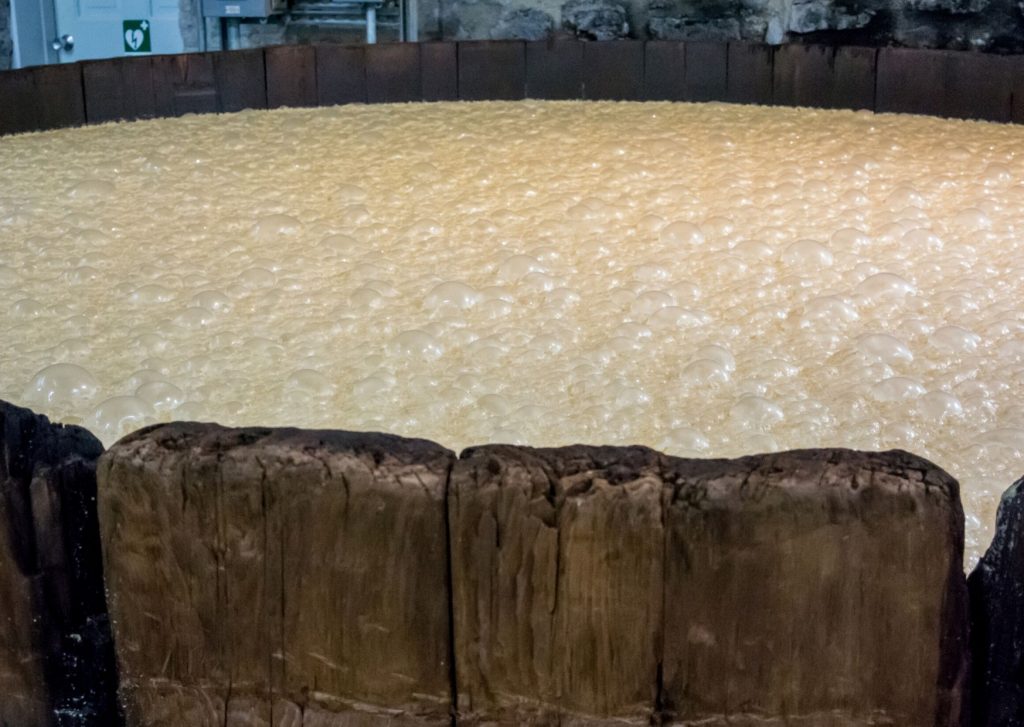
Once the question of must filtration has been resolved, we must move on to fermentation.
This is done in large vats called mash lauter or wash back. Little by little, after the addition of the yeasts, this mixture becomes alcoholic. After several days, a kind of beer called wash is obtained.
The length of fermentation will also give different qualities, with longer fermentations producing more esters and therefore more fruity characteristics. As written earlier, the filtration of the mash also plays a role. Yeast also plays a role, and especially in the United States for many distilleries have been using their yeasts for several decades. Fermentations are often longer than in Scotch whisky production.
The distillation process in Whiskey making
Two points are important for the distillation step:
1-> the choice of the still
2-> the cutting points
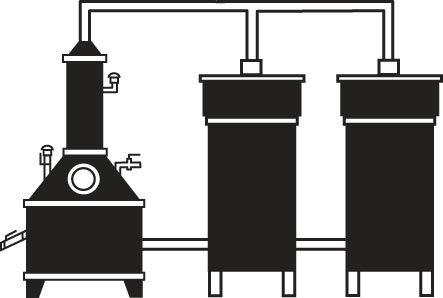
The choice of still:
Continuous still → This is the most widely used method today. It produces very pure distillates. The process is the same as for a pot still (in two or three distillations) but it is done within the same still. Let’s study the traditional method of the pot still then.
OR
Pot still → This is the most traditional method (used for single malts as it is the compulsory method in Scotland).
How does distillation work in the case of a pot still?
→ In two times (or three times for Irish whiskies). Again these are generalities. Each distillery, in accordance with the laws of its own country, has developed its own method.
*For the first distillation, a still called a wash still or beer still (in the US) is used. There is often a small window in this still. This allows the monitoring of the heating process. Wash stills are also often larger. This first liquid, which can reach up to 25% abv. is sometimes called low wine in Europe and backset in the US.
*For the second distillation, it is transferred into a second still called a spirit still which works in the same way and from which a liquid called high wine or new make spirit comes out.It is during this second distillation that the cutting will take place. The distilleries have to control which part of the distillate will actually go into the cask, which part will become the high wine or new make spirit. Please read below or go in the distillation section if you’re not sure about the concept of foreheads or faints)
The liquid that flows out of the still can be broken down into 3 segments which are called- heads or foreheads, which are toxic (you can recognize them because they contain more alcohol, i.e. 80% abv. – you can measure the alcohol content or you can also mix it with distilled water: the liquid will then become cloudy),- heart, which is the cleanest and tastiest part,- tails, which begin to give a reduced quality of taste (we recognise the tails because they turn blue when we add water).
The degree of tightening or loosening of a distiller’s cuts directly affects the raw alcohol that fills the barrel. The more the right heating (“middle cut”) is important, the heavier the components are, resulting in a more powerful whisky. Macallan, on the other hand, is famous for its tight cuts, which only incorporate 16% of the distillate. The person in charge of the distillation must therefore be very precise in order to keep only the best of the spirit according to his or her wishes.
Varying the duration and the intensity of the distillation also plays on the organoleptic profile of the whisky, indeed a slower, more extensive distillation gives sweeter whiskies.
Maturation and ageing in Whisky making
This is a major step in determining the personality of the whisky. For most whiskies it is even the stage that will make them whisky (although it is possible to taste unaged whiskies, it is often called white dog). There is an old Scottish saying that “wood makes whisky”. Indeed when the distillate is poured into its barrel it is transparent. It is the ageing in the wood that will give it its colour, and part of its taste (in some, caramel also plays a role).
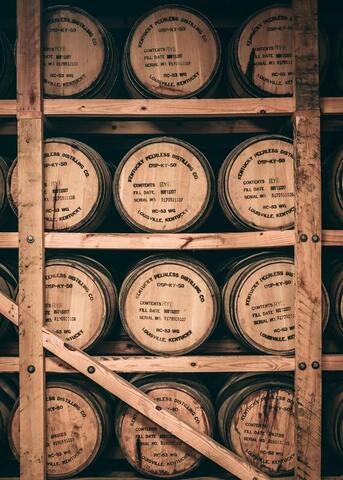
The wood gives a particular flavour through several chemical phenomena:
* evaporation (the water in the distillate evaporates and the distillate is more concentrated)
* extraction (the distillate absorbs the characteristics of the wood)
* contraction (especially in countries where day/night temperature differences are significant)* oxidation (oxygen changes the distillate flavour)
* colouring (especially the more the vat was charred)
* filtration (especially the more the vat was charred because the coal will absorb elements from the distillate)
What plays a part in ageing is also:
* the length of maturation
* the types of wood, either French, American or Japanese (see “ALL ABOUT WOOD” insert below)
* the storage (type of construction but also climate and temperature (see “CLIMATE AND TEMPERATURE” insert below)
* the type of vat, either new or used and its previous use, either neutral or more or less charred
About the role of wood
Why is oak perfect for ageing whisky?
Because it contains cellulose, hemicellulose (which caramelises when the cask is heated and gives sugar and colour to the whisky), lignin (which increases complexity and gives the whisky vanilla notes), tannins (which enhance the astringency, colour, delicacy and bouquet of the whisky).Porous, it also allows the alcohol to breathe and water to evaporate.If you have never seen a cask being made, it is worth visiting the websites of casks making companies! There are often video that replace words.
Which woods and which benefits?
European oak: it is softer, so the distillates extract more aromas;
American oak: gives a softer, sweeter taste, with hints of vanilla and caramel;
Japanese oak: it has high levels of vanillin, it is also porous and tender.
Toasted or not?
The best article explaining the difference between charred and toasted (and other indispensable notions) can be found here.New charred casks are widely used in the production of whiskey. The Scotch and Bourbon Whisk(e)y industries have a complementary use for these casks, the latter using new, first “second-hand”, barrels. Once a Bourbon has been distilled, it is put into a charred oak cask. Charred means that the inside of the barrel is ignited for a short period of time, creating a black charred layer. There are different levels of carbonisation which will have different effects on the spectrum of flavours that the oak will give to the maturing alcohol: more vanillins, lactones, “toasting”, spicy characters and tannins. The charcoal (carbon) eliminates sulphur compounds and the immaturity of the new alcohol. Casks of Bourbon are usually charred for 40 seconds to 1 minute, but some distilleries have experimented with charring times of up to 3-4 minutes. The result of carbonisation is a dramatic change in the surface – for example, the wood sugars are caramelised.
About the role of climate and temperature
The outdoor climate in which a whisky is stored has a great influence on the speed of its ageing, its interaction with the wood of the cask and on evaporation. The higher the temperature, the more the alcohol penetrates the wood of the casks, and the greater the angel’s share. Add moisture to the heat, and evaporation increases rapidly.Sometimes there is no suitable climate or environment at the seaside, as is the case with the “Jefferson, Ocean Aged At Sea”. The brand therefore sends its whisky around the world on ships, and it is exposed to the salty ocean air as it sways and expands. Meanwhile, Kavalan, from Taiwan, has made a name for itself around the world by ageing its whiskies a fraction of the life span of its Scottish competitors, thanks to their hot and humid climate. (I had taken note of this sentence, can’t find the source anymore..)
Blending
Basically, “blending” consists of bringing together a range of available batches, in most cases to create a better whole in an optimised product (but not only, as cost is also taken into consideration). It can be a mixture of different batches of spirits from the same raw material, but it can also be a mixture of different batches from different raw materials.
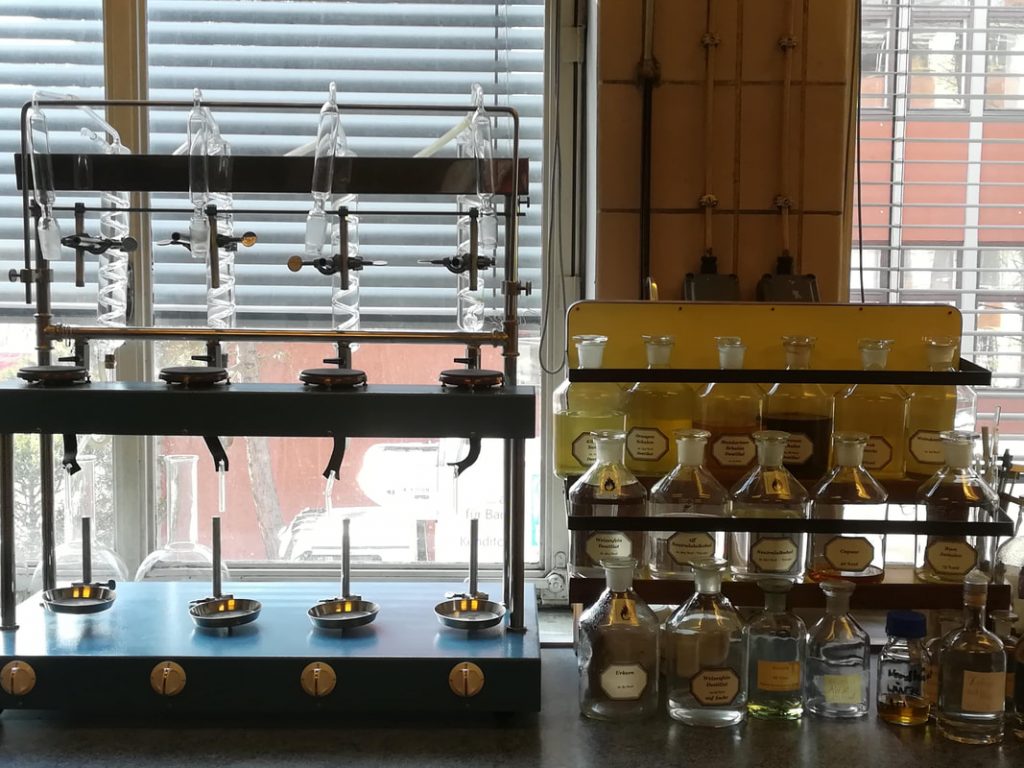
The blending makes the following possible:
* the consistency of the product from one year to another
* to create a brand or house style* optimising available resources
* to create exclusive unique products in limited quantities
* to adapt to consumer tastes, locally and/or globally
It influences :
* the quality
* style* price
* image
* production costs
How is the diversity of the different lots created?
The possibilities are numerous:
a. by using different kinds of barely and/or cereals, malted or not (including barely unmalted ones for example)
b. ageing the alcohol produced in containers of different origins, such as :
* French oak, more or less charred
* American oak, more or less charred
* using casks that have already contained other types of alcohol, such as Port, Sherry, Sauternes, Madeira or other. As wood always absorbs tiny amounts from its containers, the previous ones interact with the new liquids and add congeners, creating more complex aromas in the final product;
* without forgetting that each barrel container ages differently, creating a unique product unit, even though the difference between the different batches may be minute;
c. using different models of pot stills, as each model creates a unique aroma profile (this is less true for grain whisky as it is mainly distilled in continuous stills).
d. by varying the cutting of heads and tails during the distillation process, creating fuller or lighter style.
e. by double or triple distillation (rare)
f. by sourcing batches from different origins, by buying whisky from other distilleries
g. by using (or not using) peat for certain batches
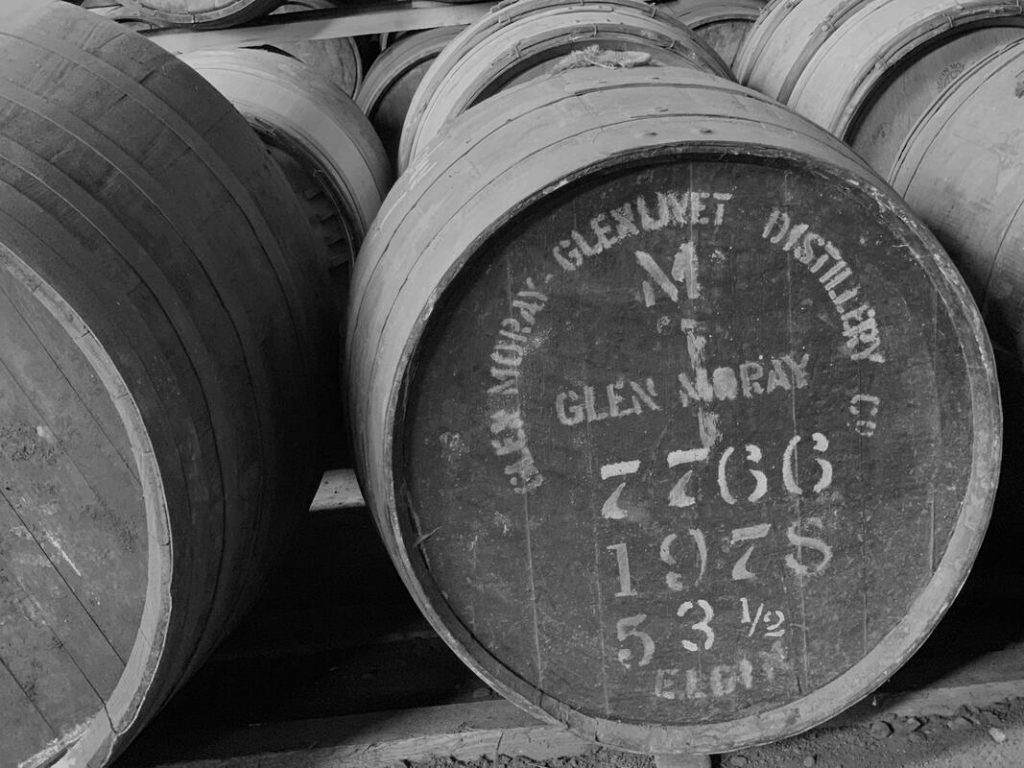
The Styles of Whisky
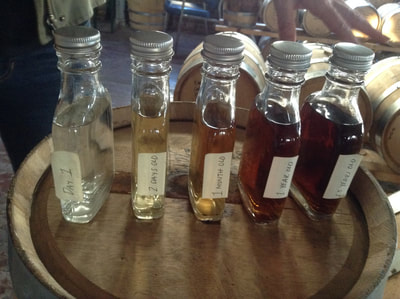
For the sake of pure intellectual joy, what are the ways in which whiskies could be classified?
PER LAW? The regulations in force in the different countries are a distinctive element between whiskies.
PER COUNTRY
Each country ends up developing a particular style (e.g. Taiwan vs. Scotland).
PER COLOUR?
Separating whiskies by colour is not a very common idea and to be honest may not be relevant or interesting. However, it would allow us to observe a rather fascinating characteristic of whiskies: their colours. The palette is particularly wide. What can the colour of whiskies tell us?
Other ways to classify whiskies, could be: PER AGE? PER STYLE? PER METHOD OF DISTILLATION?
Whisky of Scotland
The Scotch Whisky Regulations
The Scotch Whisky Regulations 2009 officially recognise five types of Scotch Whisky:
– Single Malt Scotch Whisky, produced in a Charentais still from malted barley in a single distillery.
– Single Grain Scotch Whisky, produced in a Charentais still, in a single distillery, mainly from wheat or maize as well as malted or unmalted barley.
– Blended Malt Scotch Whisky, a blend of single malts from several distilleries, is relatively rare.
– Blended Grain Scotch Whisky, a blend of Single Grains from several distilleries, is very rare.
– Blended Scotch Whisky, a blend of single Malt (40%) and single Grain (60%) from several distilleries.
Scotch whisky regions and their characteristics
The Highlands
It is a vast region with a great diversity of landscapes (mountains, large lakes). It is impossible to find a style that describes them all.4 sub-regions to note :- north highland: light bodied- eastern highlands: lightly smoked and sweet malt.- western highlands: three distilleries on the continent- the central highlands: lighter and milder, but not as sweet as the Speysides. It is in the Highlands that islands such as Islay, Jura, Mull, Lewis and Skie are included. Few distilleries are still in operation there, there is a lot of peat in the ground, which is why the whiskies are rather peaty.
Speyside
This region is in the Highlands, in the north, with many mountains and forests, but considered as a separate entity since 2009 because it concentrates a lot of distilleries. Often the whiskies are rounder and fruitier, and quite light.
The Lowlands
In the south of Scotland, this region is the least rich in distilleries (mainly due to tax history). There are few distilleries but they produce a lot (because it is a place where cereals grow) and especially blends. Traditionally many of the distilleries, when there were more, used triple distillation. This region has a reputation for producing rather light whiskies.
Campbeltown
It is less a region than a city. Until the beginning of the 20th century, the city was full of distilleries making a rather smoky and almost oily whisky. Most of them have disappeared but it is still considered apart in the geography of Scotch whisky.
Whisky of Irland
What about the geography of Irish whiskey and its regulations?
Irish whiskey is made in … Ireland.
The main regulations defining Irish whiskey and its production are set out in the Irish Whiskey Act 1980 as follows:- Irish Whiskey must be distilled and aged on the island of Ireland;- The alcohol content must be distilled at an ABV level of less than 94.8% from a grain mash fermented by yeast, so that the distillate has an aroma and taste derived from the materials used;- The product must be aged for at least three years in wooden casks;- If the spirit consists of a mixture of two or more of these distillates, the product is called “blended Irish whiskey”.
Which ingredient is specifically Irish?
There is no such ingredient. All cereals are used.
Middleton Distillery: various cereals, mainly maize, and barley
Bushmills Distillery: malted barley + Middleton grain whiskies
Cooley Distillery: malted and unmalted barley with various grains + grains including maize, also peated barley.
It is noticeable that the malt is often unpeated but can be peaty to varying degrees (example: Connemara Peated Malt whiskey). A specific of Irish whiskey is its grain recipe though, which is often made from malted and unmalted barley.
Irish whiskeys specificities lie in the making process
The start of the making of whiskey is close to the making of whisky as explained in the intro, the differences (apart from the differences between distilleries of course) lie in the distillation process. Traditionally, Irish whiskey is distilled three times in copper stills to ensure a soft and delicate alcohol.
1. The wort/wash is heated in the first still (a wash still).
2. Then we move on to the second still (“still for low wines” or “feints still”) where more impurities are removed and the tails are collected.
3. The tails are then taken to a third still (alcohol still) where a further refining of the alcohol is carried out. The result is the production of a colourless alcohol with a high alcohol content.
It is this third distillation that gives Irish Whiskey its different taste, purer and lighter than Scotch Whiskey which is distilled twice. However, there is no rule that requires triple distillation.
Whiskies of the USA
What is the geography of whisky in the US?
Whisky (or bourbon) can be produced anywhere in the United States, at least wherever it is legal to distill spirits. But most is produced in Kentucky, where bourbon production has a strong historical association. About 95% of bourbon is produced in Kentucky. The state has 4.9 million aging barrels of bourbon – a number that exceeds the state’s population. Tennessee is home to other major bourbon producers, although most of its producers do not call their finished product bourbon.

Which ingredient is specifically American?
Corn?
Ok, it’s not specifically American today but the corn does come from that continent. And Bourbon is the only whisky that must contain 51% by law. Corn has its specificities, for example, it is not easy to brew. That’s why it is heated. This allows the starch to be released. When it is cooled, the other cereals can be added (in the form of “grist”).
What else is specifically American about whiskey production?
There are terms that are only found in the US, they have already been mentioned on the intro auction to whisky page because they correspond to differences between American and British English.There are some terms that only exist in the production of American whiskies because they correspond to a specific manufacturing process. For example for the backset process explained below. Another notable difference: yeast plays a very special role in the United States, as many distilleries have been using yeast for several decades. Fermentations are often longer than in Scotch whisky.
Some techniques are specifically American
Backset
Backset is the result of the first distillation in the beer still of the Bourbon and Tennessee Whiskey production process. It is the acidic liquid residue that remains at the bottom of the still after the first distillation is completed. It is reintroduced into the production line. There are two possibilities, and most of the time both are used simultaneously:
* can be added in the cooker, to create an acid mash
* can be added to the fermenting must at the same time as the yeast.
Backset is useful in several ways :
* it changes the pH of the mash
* it helps to minimise the effect of hard alkaline water
* it favours the propagation of yeast during the fermentation process
* it reduces the risk of bacterial infections
* it creates consistency of style between the different batches.
Charred Oak Barrels
Bourbons gain colour and flavour the longer they mature. The objective is maturity, not a particular age. Bourbon can age too long and become woody and unbalanced.What is the wood treatment, which is really an American peculiarity?Casks of Bourbon whisky are usually charred from 40 seconds to 1 minute, but some distilleries have experimented with charred times of up to 3-4 minutes. The result is a spectacular change in the surface: the sugars in the wood are caramelised, which will spread into the alcohol as it matures, and to make bourbon, only new oak casks are allowed. They cannot be reused and are often sold to other producers of spirits (rum, tequila, Irish or Japanese whisky…).
Lincoln County Process
This is a type of filtration specific to Tennessee whisky production which consists of passing the white dog, the alcoholic and transparent liquid that remains after the second distillation, through layers of maple charcoal to soften the alcohol and give it the characteristic sweetness of the product.
As well as some styles are specific to American whiskeys
Such as rye, corn, wheated or blended whiskey but old many whiskeys containing the word Bourbon.
Bourbon
Since 1964 Bourbon has had the following definition:
* must be made in the United States
* must contain 51% of corn at least
* must not be distilled at more than 80%.
* must not contain any additives (except water!).
* must be aged in new 180 litre American oak barrels, burnt (“charred”) .
Straight Bourbon
A bourbon can be called so if it has spent two years in a vat during the summer months.
In addition, any bourbon aged less than 4 years must indicate the age of the eau-de-vie on the bottle.
Old Bourbon
The old county of Bourbon was created in 1785 and bears the name of the French royal family. While this vast county was divided into many smaller ones, at the beginning of the 19th century, many people continued to call the area Vieux Bourbon. Old Bourbon was the main port on the Ohio River from which whiskey and other products were shipped. The word “Old Bourbon” was stenciled on the barrels to indicate their port of origin.
Old Bourbon whiskey was different because it was the first corn whiskey that most people had ever tasted. Over time, bourbon became the name of every corn whisky. It means nothing strictly speaking, it does not correspond to a definition or a style but it can help marketing wise 🙂
Tennessee Whisky
Tennessee whisky is made from at least 51% corn wort and aged in new roasted oak barrels, these products differ from bourbon in two ways: they must be made in the State of Tennessee and generally are made with the Lincoln County Process (see above).
Whisky of the world
As you can imagine, the place where the whisky is made, i.e. the country plays a big role! Some countries, and obviously where whisky was born, have developed specificities which will be examined separately: Scotch whisky here, Irish whiskey there, and finally, American whiskey here.
As you know by now, whisky can be made anywhere so here are some short overviews below:
EUROPE
There is no specificity to be noted except for the choices made by one distiller or another. I take advantage of this insert to say how much whisky production in continental Europe is getting more interesting and important in terms of quantity (Germany has almost twice as many whisky producers as Scotland) and quality. For European readers, please go on and read that article should you want to drink continental: https://vinepair.com/articles/best-whisky-shortage-europe/
CANADA
Production in Canada is fairly close to U.S. production in terms of manufacturing. However, the law is more lax. A Canadian wiskey can add 9% of whisky produced elsewhere in the world or even alcohol that is not whisky. There is a law of minimum 4 years ageing, as in Scotland, but there is no rule regarding casks (they can be new, or used, charred or not).
JAPAN
Although the Japanese producers follow the Scottish style of whisky making, the main difference is that they make their whisky from clear crystal wort. This difference results in a wide range of very clean and precise aromas, with very little malt aroma. This type of wort can be obtained by a longer fermentation process, combined with a precise selection of yeasts. Another Japanese characteristic is the qualities of water (very soft).
INDIA
Distilled alcoholic beverages that are labelled as “whisky” in India are usually blends of neutral spirits that are distilled from fermented molasses (India is the second largest producer of sugar cane in the world, making molasses available at low prices as a by-product of sugar processing), with only a small proportion consisting of traditional malt whisky, usually around 10-12%. Outside India, such a drink would be more likely to be labelled as rum.
RESOURCES/SOURCES
Whisky: The Manual by Dave Broom
Alcools by André Dominé















